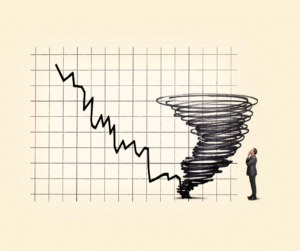With volatility back and a long-overdue stock market correction in the recent past, many formerly-complacent investors are now scrambling to protect themselves going forward. Indeed, all investors should heed four timely tips offered by The Wall Street Journal. These are: avoid concentrated positions; reduce downside risk; don’t panic over volatility; and hunt for bargains in the next selloff. “Investors who stay diversified, rebalance on a regular basis and stick with a plan, and understand their downside are a lot better off in this kind of market,” as Glenn Wiggle, managing partner of Peak Brokerage Services, told the Journal.

The CBOE Volatility Index (VIX) spent much of 2017, and the opening weeks of 2018, at a rather placid level of around 10. Then it started soaring on February 5, eventually reaching a recent high of 50.30 in intraday trading on February 6, per Yahoo Finance. More recently, its range has been around 18, far below the panic-inducing (or panic-induced) levels of early February, but significantly above where it started the year. Meanwhile, partly due to the return of volatility, the Investopedia Anxiety Index (IAI) has been registering very high levels of concern about the securities markets among our millions of readers worldwide.
1. Stay Diversified
Investors should check their portfolios regularly, so that no given stock position represents an unduly large percentage of the total. A rule of thumb that many advisers use, per the Journal, is to trim an equity allocation if it moves more than five percentage points above your long-term target for it. (For more, see also: Stock Strategies for a Highly Volatile Market.)
2. Reduce Downside Risk
Investors in funds should take note of how they performed when their benchmarks were down. If a fund declined more than its benchmark, it may have a riskier portfolio than you expected. Perhaps the fund manager added some hot stocks that are not in its benchmark, in an attempt to outperform that benchmark when the market was rising. In any case, you cannot rely on a fund’s name, stated style, or stated benchmark to know exactly what you are getting, the Journal notes, suggesting that more digging of this sort often may be necessary.
3. Don’t Panic Over Volatility
“Volatility is a normal part of investing that can be triggered by any number of events, so investors shouldn’t be surprised when it occurs, advisers say,” per the Journal. Indeed, investors should keep an eye on the long term and ignore temporary market noise, as investing gurus Warren Buffett and John Bogle, founder of the Vanguard Group, repeatedly advise, per MarketWatch. (For more, see also: Buffett Warns Investors To Avoid Borrowing Money To Buy Stocks.)
3a. Avoiding Volatility Has a Cost
Among the many new investment themes are low-volatility funds, which hold the least volatile stocks in the S&P 500 Index (SPX). According to analysis by financial data provider CFRA, the Journal says, these funds did indeed fall less than the broader market in the recent correction. But the advantage was modest, about 50 to 60 basis points during the week ending February 9, when the S&P 500 fell by 5.2%.
Perhaps more significantly, these low-volatility funds lagged the S&P 500 by as much as five percentage points (or 500 basis points) on a total return basis in 2017, when the market was up, per CFRA and the Journal. Investors who piled into these funds after the recent correction thus are likely to underperform if the market continues to rally, the Journal warns. (For more, see also: 10 Low Volatility Stocks for Wild Markets.)
4. Make Volatility Your Friend
If you believe that the economic fundamentals are strong, and warrant a continued rally, then you should be prepared to shop for bargains during a future pullback. However, rather than buying the dips without a clear strategy, the Journal advises taking a more selective approach. For example, since the Federal Reserve has announced its intent to continue raising interest rates, it may make sense to avoid utility and telecom stocks that are interest rate sensitive bond substitutes. Materials and commodities stocks tend to outperform in the latter stages of an economic cycle, but investors should wait to buy at lower valuations, as Jay Batcha, founder and chief investment officer (CIO) at Michigan-based Optima Capital told the Journal.
The Bottom Line
Len Hayduchok, CEO of New Jersey-based Dedicated Financial Services, warns that trying to beat the market in the short term rarely outperforms a well-thought, long-term buy-and-hold strategy. “If you don’t understand that you could lose a significant amount in a short period, you shouldn’t be in the stock market,” he told the Journal.
Originally Published: https://www.investopedia.com/news/strategies-volatilityproof-your-portfolio/
ARTICLE_Volatility Proof Your Portfolio_Investopedia_June 2019 - Copy







